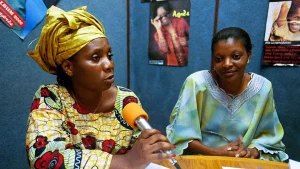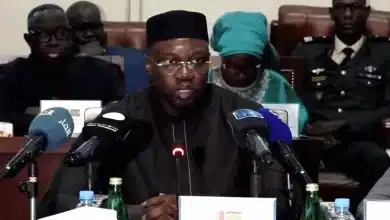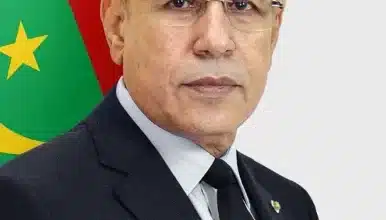10 choses que vous ne savez peut-être pas sur les réfugiés
La Banque mondiale œuvre avec les pays d’accueil pour inclure les réfugiés...
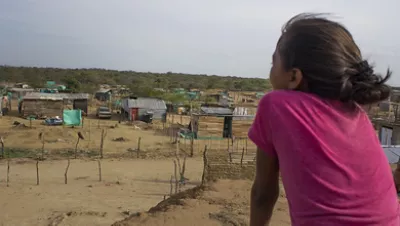
10 things you might not know about refugees
The world’s attention is once again focused on the latest massive refugee crisis – this time in Ukraine – and the plight of those forcibly displaced across international borders. Humanitarian aid is pouring in, a colossal logistics operation is underway to welcome, treat and support those fleeing wars, and citizens around the world are doing all they can to help.
Sooner or later, however, the crisis will stabilize; most journalists will leave; other topics will start making headlines. This was already the case for the majority of the 25 million refugees in the world before the start of the war in Ukraine. But their particular needs have not disappeared, and possibilities to improve their situation can still be explored and developed. Check out the facts below to learn more about the challenges they face in the long run and the path to lasting solutions.
1. For the first time, the world has more than 100 million forcibly displaced people.
This figure, updated in the first months of 2022, includes people forcibly displaced within their own country (internally displaced persons), asylum seekers, Venezuelans displaced abroad and 27, 1 million refugees – the highest figure ever recorded – due to persecution, conflict, violence or human rights violations. This record comes after a decade of steadily rising figures which show that the number of forcibly displaced people has doubled in less than a decade.
2. Three out of four refugees remain displaced for five years or more.
Some time after a crisis, refugees no longer make the headlines, but many of them remain displaced for a long time and still need help. For example, more than 10 years after the start of the war in Syria, there are still 6.8 million Syrian refugees hosted in 128 countries.
READ MORE: Abu Dhabi Initiative for Refugees
3. Refugees in protracted situations need more than temporary humanitarian assistance.
Shelter, food, water and emergency medical assistance are essential at the start of forced displacement. When this displacement has no end in sight, it is necessary to find jobs that allow refugees to become self-sufficient, to put in place long-term education plans that will allow their children to develop their skills for a better future – whether in their home country or in their host community – and to put in place the legal framework and policies that make it all possible.
The World Bank works with host countries to include long-term refugees in existing national support systems for health and education, and to facilitate their access to the formal labor market
Ami Vitale / World Bank
4. Four out of five refugees in the world live in developing countries.
These countries were already struggling to achieve their own development goals when they began to receive refugees from neighboring countries. Dealing with the sudden arrival of vulnerable new arrivals poses a challenge for host countries and puts additional pressure on their ability to provide basic services and infrastructure. The World Bank helps countries manage these new circumstances so that they can continue to reduce poverty at home while providing a welcoming environment for refugees.
5. The education of all refugee children would cost 5% of public education expenditure.
Nearly half of the world’s refugees are under the age of 18, and a large proportion of them are displaced while they are in school. Education is the key to a promising future where they can become self-sufficient and contribute to their community. According to a report published in 2021 by UNHCR and the World Bank, the cost of integrating refugee children into national education systems would represent less than 5% of the current cost of public education in developing countries which host 82% refugees around the world.
6. Displacement affects men and women differently.
These differences are present from an early age: refugee girls are less likely than boys to complete their education and are, like women, more exposed to gender-based violence. Women are also affected by other inequalities such as, for example, the requirement in some host countries of additional procedures to issue proof of legal identity to women so that they can open a bank account, access services health or social services, or legally own property. The World Bank has published a series of research papers on the gender dimensions of forced displacement to expand high-quality research that can help inform policy in this area.
7. The private sector has an important role to play in the refugee situation.
Companies can be a source of jobs. They can support entrepreneurship and make investments that benefit refugees and those who host them. And they can offer goods and services tailored to the needs of refugees. In return, refugees bring their skills, talents and dynamism to employment and, as customers, they represent income for businesses.
The World Bank Group’s International Finance Corporation (IFC) works with partners to create jobs by promoting access to finance and entrepreneurship, improve the delivery of basic services such as education and energy, encourage business-friendly policies in refugee-hosting areas and share lessons learned.
8. The presence of refugees can bring benefits to host communities.
In Uganda, the presence of refugees has significantly improved host communities’ access to social services; in other African countries, it has contributed to improving economic conditions for all in the medium and long term; and in Peru, the presence of more than one million Venezuelans has improved local labor market conditions, reduced crime rates, increased levels of trust among neighbors and improved life satisfaction. – to public services. These studies and others show that inclusive policies that grant refugees the right to work, freedom of movement, access to social services, as well as to property, can promote social and economic integration without causing negatash reaction.
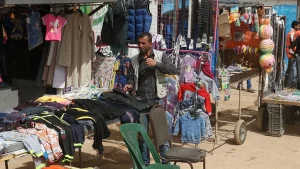
Dominic Chavez / World Bank
9. We don’t have enough data on refugees.
We can easily find aggregate figures on refugees worldwide and by country (see UNHCR’s Global Trends report), but getting an accurate picture of this crisis is difficult due to barriers to obtaining data from quality on the social and economic conditions of refugees and host communities. We need more and better data to know what works, what doesn’t, what policies to formulate and what actions to take in each situation. The World Bank is working with UNHCR and other partners on data collection and analysis to help shape policies and improve development programs that can benefit all people affected by forced displacement .
10. Return is often the main objective of refugees and hosts, but it can be difficult to achieve.
Many conflicts have proven difficult to resolve, often turning into protracted situations. Those who manage to emerge from the crisis experience precarious security, economic and social conditions for many years. Among those who return, resuming their previous way of life is a challenge: some have to flee again or are displaced in their own country because their land and property may be occupied by someone else or the initial conflict re-ignited. surface.
For a development institution like the Bank, the « end point » of working with refugees is not where they live – in exile or back in their country of origin – but whether they remain vulnerable and still need specific support.
And, more recently, our efforts have also focused on avoiding the need for a « starting point » by placing greater emphasis on prevention and addressing the root causes of conflict to create more stable societies – so that populations do not need to flee.
Source: World Bank
You can read informative articles like this one on RapideInfo!

